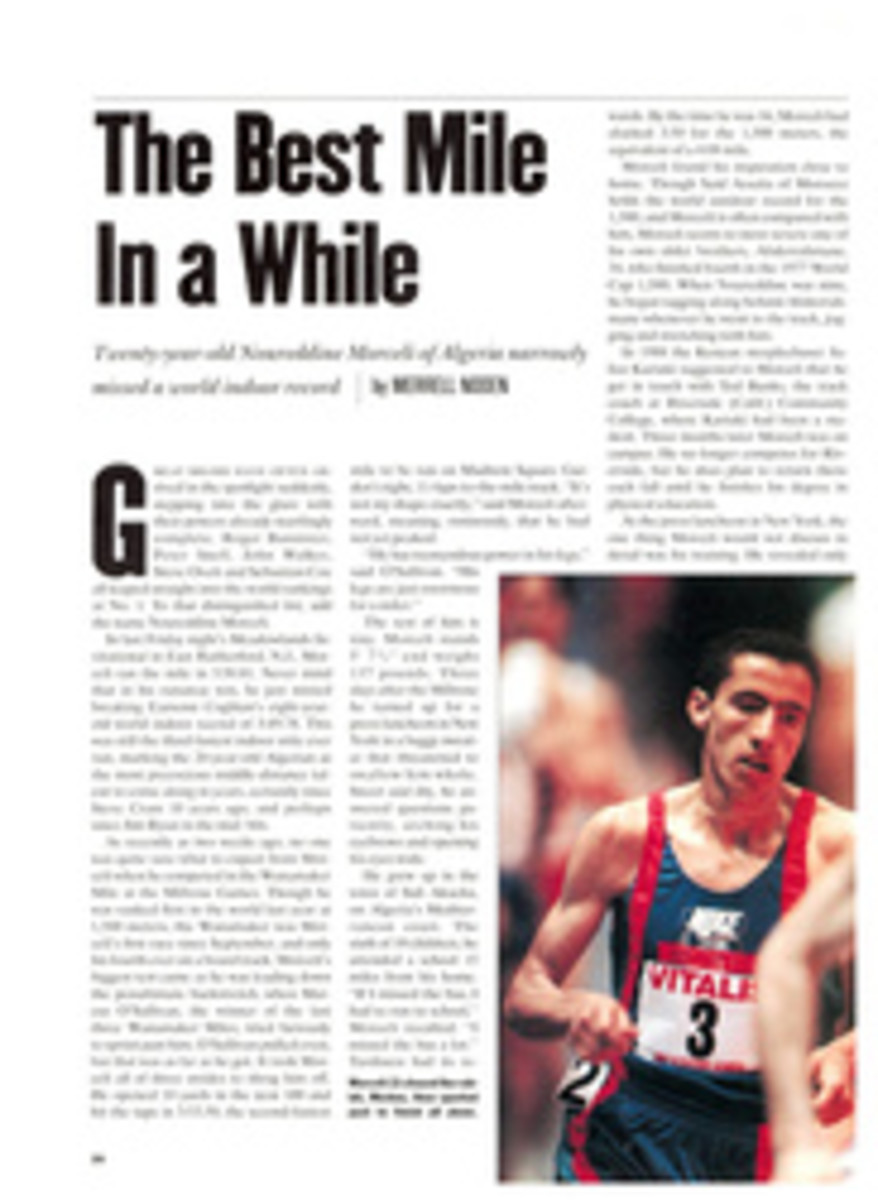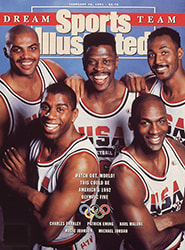
The Head Hoya—a Revealing Look
In "BIG MAN ON CAMPUS" (HENRY Holt, $19.95), Leonard Shapiro has set for himself, in every respect, a tall order. His subject, Georgetown University's 6'10" basketball coach, John Thompson, is surely one of the most intimidating figures in all of sport, a grump who is at his least congenial when confronted by an inquiring journalist.
When Shapiro, a former sports editor and now a writer for The Washington Post, first approached Thompson with the idea of a biography, the coach predictably replied that helping Shapiro "would be like Ford cooperating with General Motors," particularly, Thompson added, since he had every intention of writing his own book. Shapiro reports that during the course of his research he learned that Thompson apparently had instructed friends and associates to stonewall the project. Hoya Paranoia, Shapiro discovered, is something more substantial than a catchphrase. But he persevered, digging deep through files and buttonholing some 250 of Thompson's friends and foes, a few of whom wished to remain anonymous. The product of all this legwork is a scrupulously evenhanded, dutifully fair, admirably impartial, exceptionally thorough and, ultimately, surprisingly bland portrait of this college basketball giant.
Oh, it is not that Big Man is a puff piece. Indeed, as the publisher's publicity advises us, Shapiro shows the coach "warts and all." Thompson the bully is here. So is Thompson the greedy. And Thompson the meanie. There is even the suggestion that the head Hoya's incessant crowing about the virtues of classwork smacks of the hypocritical, considering some of the less-than-solid students he has enlisted to represent this otherwise impeccable institution of higher learning. And since Thompson's teams are invariably mostly black in a school that's overwhelmingly white, Shapiro must confront the oft-heard accusations that Georgetown is represented on the basketball court by mercenaries from urban ghettos. He also addresses similar charges that Thompson is some sort of reverse racist who refuses to recruit qualified white players. Thompson himself has a pat response to such indictments: It is bigotry, pure and simple.
He boycotted two of his team's games in 1989 to protest the NCAA's passage of Proposition 42, which would have denied financial aid to athletes failing to meet such minimum academic standards as a 700 score (of a possible 1,600) on the Scholastic Aptitude Test. Thompson's contention was that Proposition 42 discriminated against the culturally disadvantaged and conspired to deprive inner-city black youths of the chance for a college education.
Not every African-American sports figure agreed with Thompson. Tennis's Arthur Ashe, most prominent among the dissenters, said, "The cultural bias issue in theory makes sense. But it doesn't hold much water because 700 is so low. It's laughable. I don't know any schools in Division I that would have an incoming freshman class averaging 700 on the boards. We're also talking about a graduation rate of less than 20 percent for black athletes in colleges. That's pitiful. We're exploiting so many of these kids. My feeling is that you tell these kids in the ninth grade, 'This is what it takes to get in. If you don't do it, you can't get in.' It's got to start somewhere." But Thompson's position prevailed and Proposition 42 was modified.
There were, of course, sound reasons for Thompson's vehemence. It was basketball, after all, that lifted him out of the poverty of his youth in his native Washington, D.C. His mother, an educated woman, was a domestic, his father an illiterate factory worker. Thompson became a good student as well as a record-setting scorer at Providence College. He went on to play two years as Bill Russell's backup on Red Auerbach's Boston Celtics, and much of what he learned about the game and personal conduct came from these two fierce and intensely secretive men.
Today, Thompson reportedly earns, with endorsements and a controversial Nike contract, in the friendly neighborhood of $1 million annually. "I want to be a winner," he has said. "I want my players to graduate, and I want to get rich.... The biggest con in education is kids saying they were exploited. If the kid doesn't get an education, it's his fault.... The world is not black or white as much as it is green."
Shapiro argues that Thompson has, indeed, earned his keep. In the 18 seasons before the current one at Georgetown, his Hoyas won 423 games and a national championship. They won four Big East regular-season conference championships (the league has been in existence only since 1979), were in 14 NCAA tournaments and made the Final Four three times. Thompson's basketball program carries the economic burden for most sports at Georgetown, as well as contributing to the school's scholarship fund. Before Thompson arrived there in 1972, Georgetown's basketball teams had not been to an NCAA tournament since 1943. In fact, before Thompson, the school was known for only one little thing: its academic excellence.
Thompson would say that despite his recruitment of the underprivileged and, frequently, undereducated, he hasn't really undermined that scholastic renown. Entering this season, 61 of his 63 players who completed four years of eligibility had earned degrees, placing his graduation rate among the very best in the often sordid business of college athletics. But, Shapiro sharply observes, "the percentage drops considerably when the number of graduates is compared with the total number of freshmen who have entered the program. Some of these freshmen eventually drop out of school or transfer, for either academic or athletic reasons."
And Thompson is not always the academic counselor he portrays himself to be. Craig Shelton, who left school after four years to play professionally, tried to reenter Georgetown after his pro career in hopes of finally getting his degree. He called Thompson for help and encouragement, he told Shapiro. The calls were never returned, leading the former player to conclude that his old coach had lost interest in his continuing education once his eligibility had expired. Another former player remarked anonymously, "He always told us not to let the white man exploit you, but some of us think it wasn't the white man who exploited us, it was John Thompson."
At the same time, this ogre can be extraordinarily thoughtful and loyal. When guard Fred Brown cost the Hoyas the 1982 national championship by passing the ball to an opponent he had mistaken for one of his teammates in the last seconds of the championship game, Thompson conspicuously embraced Brown after the buzzer. His longtime academic coordinator, Mary Fenlon, has been with him since his high school coaching days, and several of his staff members and associates have been at Georgetown for a decade or more. Most of them, contrary to the view of Thompson as a reverse racist, are white.
What we have here is an enormously complex individual, an African-American both seething with rage and possessed of loving instincts. Shapiro acknowledges at the beginning of Big Man on Campus that he is assuming a daunting task. Unfortunately, it is too daunting, for despite the mountain of evidence the writer has assembled, pro and con, he himself seems unable to fathom his subject. Shapiro is crippled, it would appear, by an unnecessary awe. The giant is never cut down to size. In the end, we, the readers, are left with the same question Shapiro asks himself in the opening pages: "Does anyone really know John Thompson?" The answer, regrettably, is no.
ILLUSTRATION
PHILIP BURKE

